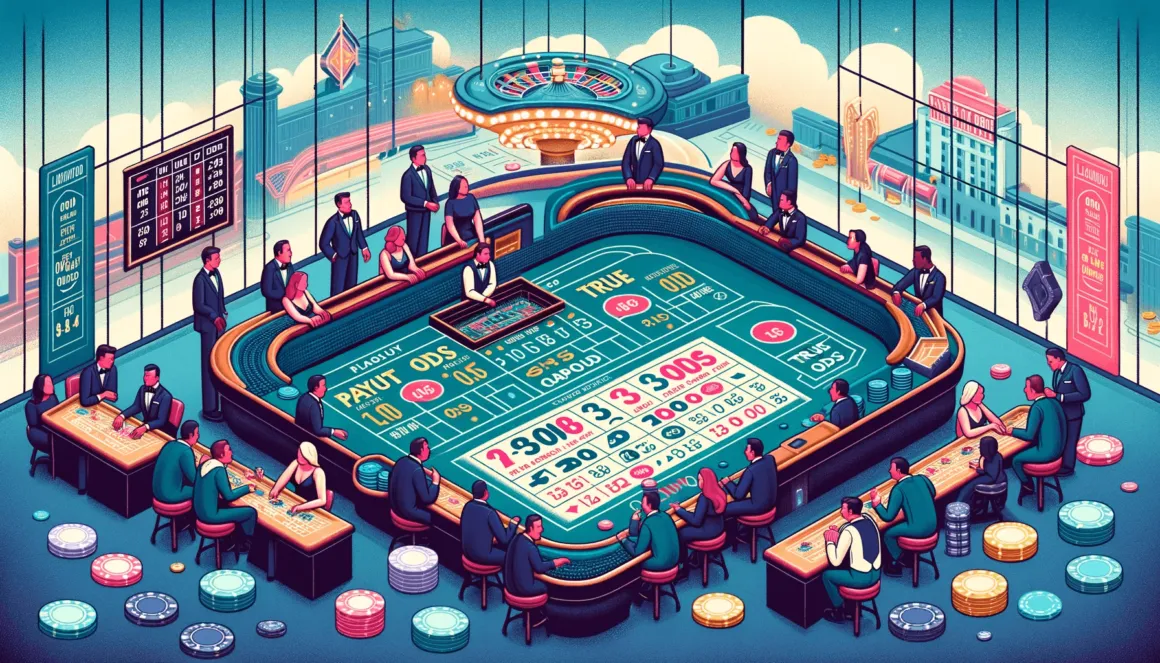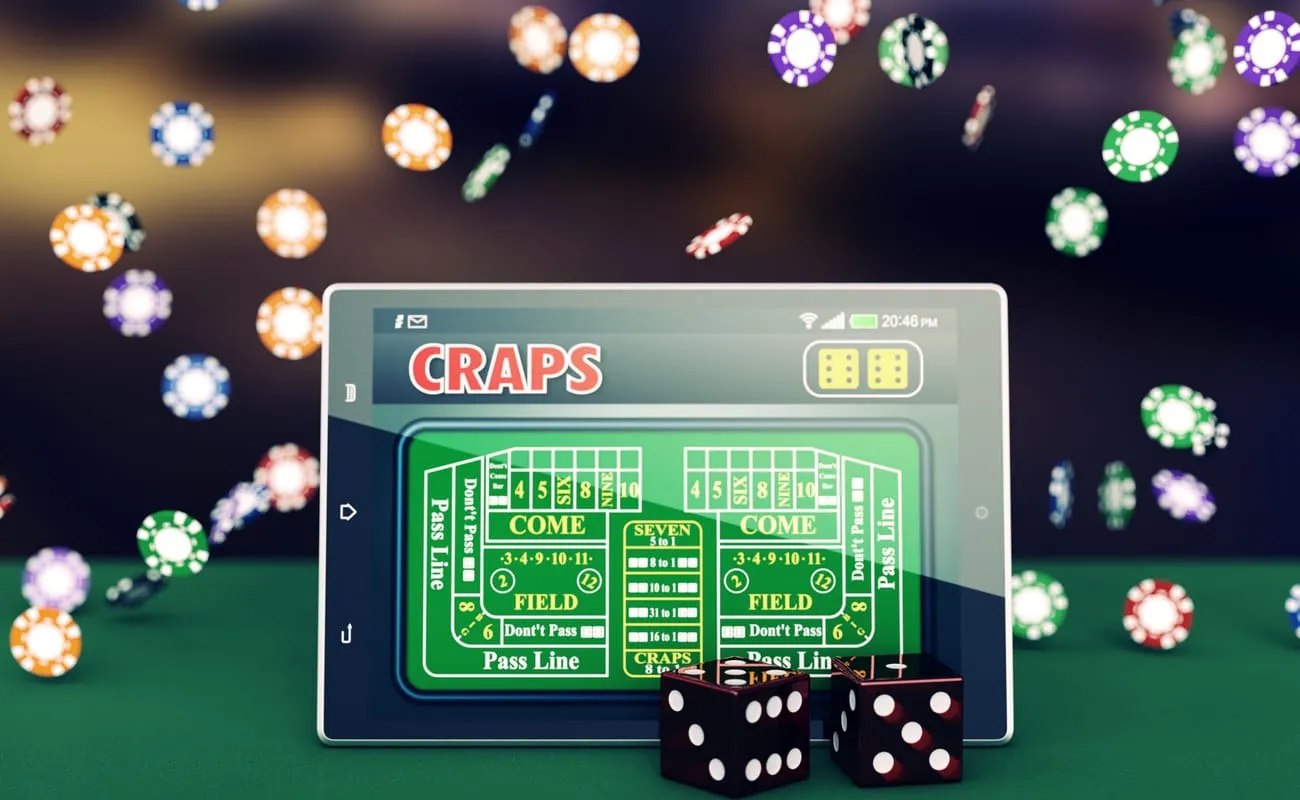
Understanding Craps Odds How to Increase Your Chances of Winning
Playing craps is an exciting and often fast-paced game that can be found at casinos all over the world. And while it may seem like a game of chance, there are actually certain strategies and techniques that can help improve your odds of winning. One of the key factors in playing craps is understanding the odds and how they work. In this article, we will dive deeper into the world of craps odds and give you the tools to increase your chances of success.

1. The Basics of Craps Odds
To understand craps odds, we first need to have a basic understanding of the game itself. Craps is a dice game where players place bets on the outcome of a roll or series of rolls of two dice. The game is played at a large, specially designed table with various betting options available to players.
In craps, each round starts with a “come-out” roll, where the shooter (the person rolling the dice) attempts to establish a point. This point is then marked on the table by the dealer, and the shooter continues to roll the dice until either the point is rolled again or a seven is rolled. If the point is rolled again, this is known as “making the point” and the round ends. If a seven is rolled instead, this is known as “sevening out” and the round also ends.
Now let’s take a closer look at the different types of bets available in craps and their corresponding odds.
1.1 Pass Line Bet
The pass line bet is the most common bet in craps and has a 1:1 payout ratio. This means if you bet $10 and win, you will receive $10 in winnings plus your original bet back. The pass line bet is made before the come-out roll and wins if the shooter rolls a 7 or 11. If the shooter rolls a 2, 3, or 12, this is known as “crapping out” and the bet loses. Any other number (4, 5, 6, 8, 9, or 10) becomes the point, and the shooter continues to roll until either the point is rolled again or a seven is rolled.
The odds of winning a pass line bet are slightly better than 50/50, with a 49.29% chance of winning and a 50.71% chance of losing. This bet has a house edge of 1.41%.
1.2 Don’t Pass Line Bet
The don’t pass line bet is essentially the opposite of the pass line bet and also has a 1:1 payout ratio. This bet wins if the shooter rolls a 2 or 3 and loses if they roll a 7 or 11. A roll of 12 results in a tie, known as a “push.” If any other number is rolled, it becomes the point, and the shooter continues to roll until either the point is rolled again or a seven is rolled.
The odds of winning a don’t pass line bet are slightly worse than 50/50, with a 47.7% chance of winning and a 52.3% chance of losing. This bet has a house edge of 1.36%, making it slightly more favorable for players compared to the pass line bet.
1.3 Come Bet
The come bet is similar to the pass line bet, but it is made after the come-out roll. The bet wins if the shooter rolls a 7 or 11 and loses if they roll a 2, 3, or 12. Any other number becomes the come point, and the shooter continues to roll until either the come point is rolled again or a seven is rolled.
The odds of winning a come bet are slightly better than the pass line bet, with a 50.8% chance of winning and a 49.2% chance of losing. This bet has a house edge of 1.41%.
1.4 Don’t Come Bet
The don’t come bet is essentially the opposite of the come bet and is made after the come-out roll. The bet wins if the shooter rolls a 2 or 3 and loses if they roll a 7 or 11. A roll of 12 results in a push. If any other number is rolled, it becomes the come point, and the shooter continues to roll until either the come point is rolled again or a seven is rolled.
The odds of winning a don’t come bet are slightly worse than the come bet, with a 47.6% chance of winning and a 52.4% chance of losing. This bet has a house edge of 1.36%.
1.5 Place Bets
Place bets allow players to bet on a specific number (4, 5, 6, 8, 9, or 10) before it is rolled. These bets have different payouts depending on the number chosen:
- 4 and 10 have a payout ratio of 9:5, with a house edge of 6.67%
- 5 and 9 have a payout ratio of 7:5, with a house edge of 4%
- 6 and 8 have a payout ratio of 7:6, with a house edge of 1.52%
Place bets remain active until the chosen number is rolled or a seven is rolled, resulting in the bet being lost. The odds of winning a place bet vary depending on the number chosen, but the overall house edge for all place bets is between 1.52% and 6.67%.
1.6 Field Bet
The field bet is a one-roll bet that wins if the shooter rolls a 2, 3, 4, 9, 10, 11, or 12 and loses if they roll a 5, 6, 7, or 8. The payout for this bet depends on the number rolled:
- 2 and 12 have a payout ratio of 2:1, with a house edge of 5.56%
- 3 and 11 have a payout ratio of 1:1, with a house edge of 2.78%
- 4, 9, and 10 have a payout ratio of 1:2, with a house edge of 5.56%
The odds of winning a field bet are slightly less than 50/50, with a 44.44% chance of winning and a 55.56% chance of losing. This bet has a house edge of 2.78% to 5.56%, depending on the number rolled.
2. Understanding Craps Odds

Now that we have a better understanding of the different types of bets available in craps, let’s take a closer look at the odds associated with each bet. In craps, odds are expressed as a ratio, such as 2:1, which means you will receive two units of winnings for every one unit bet. For example, if you bet $10 and win with a 2:1 payout, you will receive $20 in winnings plus your original bet back.
2.1 True Odds vs. Casino Odds
The true odds of winning a bet in craps are the actual mathematical probability of that outcome occurring. For example, the true odds of rolling a 7 are 6:1, as there are six ways to roll a 7 compared to the 36 possible combinations when rolling two dice. However, casinos do not offer true odds on all bets because they need to make a profit. Instead, they offer casino odds, which are slightly lower than the true odds, resulting in a house edge.
The difference between true odds and casino odds can vary depending on the type of bet. For example, the true odds of winning a pass line bet are 251:244, but the casino odds are 251:256, resulting in a house edge of 1.41%. On the other hand, the true odds of winning a field bet are 251:244, and the casino odds are also 251:244, with no house edge.
2.2 Odds vs. Payouts
It’s important to note that odds and payouts are not the same thing. While odds represent the actual probability of an outcome, payouts are the amount of winnings you will receive if your bet is successful. In craps, payouts are always lower than the true odds because of the house edge. This means that even if you win, you will still be losing money in the long run due to the lower payouts compared to the true odds.
3. Using Strategies to Improve Your Odds
Now that we have a better understanding of craps odds, it’s time to explore some strategies that can help improve your chances of winning.
3.1 Play the Odds
One of the best ways to improve your odds at the craps table is to stick to bets with low house edges. This means focusing on bets like the don’t pass line, don’t come, and place bets on 6 and 8. These bets have some of the lowest house edges in craps and offer better chances of winning compared to other bets.
3.2 Take Advantage of Free Odds Bets
In addition to the main bets, most casinos also offer free odds bets that can be placed after the come-out roll. These bets have no house edge and pay out at true odds, making them an excellent opportunity to increase your winnings. To take advantage of free odds bets, you must first place a pass line or come bet, and then place additional chips behind it on the table. The odds of winning a free odds bet vary depending on the point, but they are often listed on the table.
3.3 Use Dice Control Techniques
Some players believe in using dice control techniques to improve their chances of rolling certain numbers. While the effectiveness of these techniques is still up for debate, it’s worth trying out if you’re willing to put in the time and effort to master them.
Dice control techniques involve holding the dice in a specific way and throwing them in a controlled manner to try and achieve a desired outcome. Some players claim to have had success with these techniques, while others dismiss them as pure superstition. Ultimately, it’s up to each individual player to decide if they want to incorporate dice control into their strategy.
4. Tips for Playing Craps
In addition to understanding craps odds and utilizing effective strategies, there are also some general tips that can help make your craps experience more enjoyable and potentially profitable.
4.1 Set a Budget and Stick to It
Before you start playing craps, it’s essential to set a budget and stick to it. This will help prevent you from overspending and potentially losing more money than you intended. Once you’ve reached your budget, it’s important to walk away and not chase your losses.
4.2 Start Small and Slowly Increase Your Bets
When starting out in craps, it’s a good idea to start with small bets and gradually increase them as you become more comfortable with the game. This will help you manage your bankroll and give you a chance to get a feel for the table before making larger bets.
4.3 Avoid Betting on Every Roll
While it can be tempting to bet on every roll in hopes of winning big, this can quickly drain your bankroll and result in significant losses. Instead, try to be selective with your bets and stick to those with lower house edges.
5. Common Misconceptions About Craps Odds

Finally, let’s address some common misconceptions about craps odds that can potentially lead to misunderstandings or confusion at the table.
5.1 The House Always Has an Advantage
While it’s true that casinos need to make a profit, there are still bets in craps that have no house edge and offer players the chance to win at true odds. As we mentioned earlier, these bets include free odds bets and place bets on 6 and 8.
5.2 Winning Streaks Are More Likely to Happen
Many players believe that if a particular number has been rolled several times in a row, it is more likely to be rolled again. However, each roll of the dice is independent of the one before it, and the probability of any number being rolled does not increase or decrease based on previous rolls.
5.3 You Can Predict the Outcome Based on Past Rolls
Similar to the previous misconception, many people believe they can predict the outcome of future rolls based on past rolls. However, as each roll is independent, there is no way to accurately predict what will happen next.
6. Conclusion
In conclusion, understanding craps odds is crucial to increasing your chances of success at the table. By focusing on bets with low house edges and incorporating effective strategies, you can improve your odds and potentially walk away with some winnings. It’s also important to remember that craps is a game of chance, and ultimately, the outcome of each roll is unpredictable. Have fun and play responsibly!

